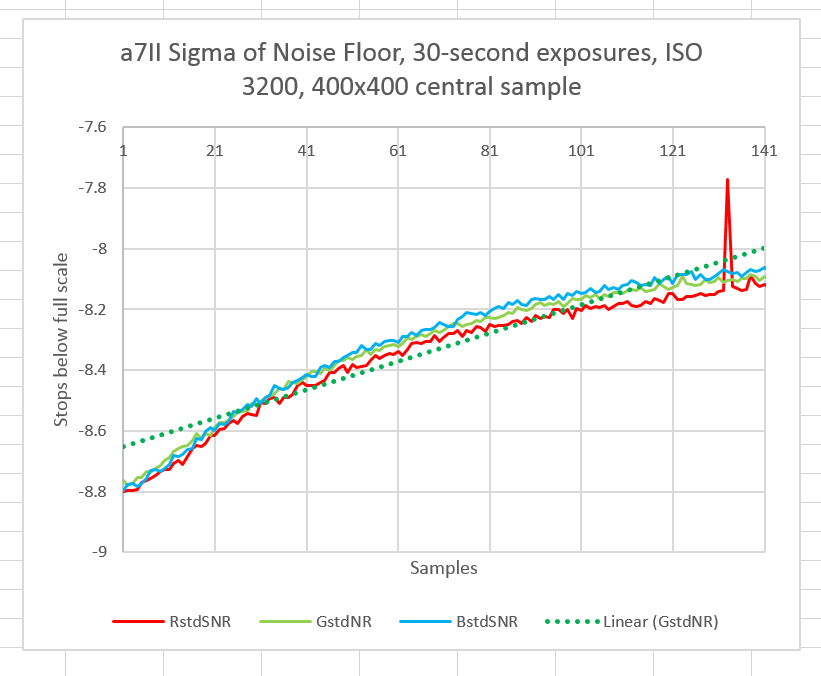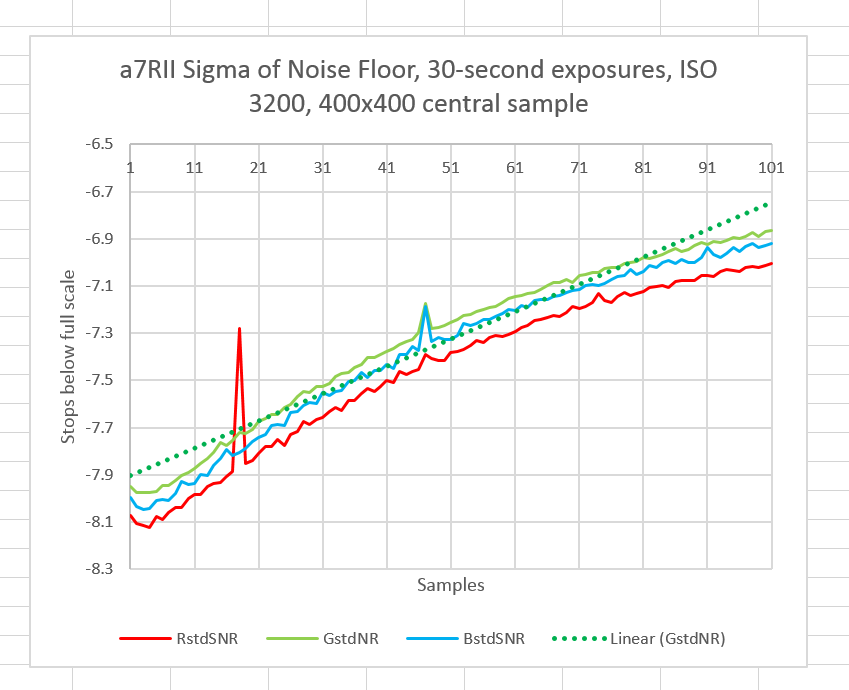One question that naturally arises from the last few days’ read noise self-heating tests is how to compare this a7II curve:
With this a7RII curve:
First off, we have to deal with the resolution differences. The a7RII image is 8000 pixels wide. The a7II image is 6000 pixels wide. So the a7RII looks log2(8000/6000) = 0.42 stops worse than it would if both cameras’ images were res’d down to the same size.
That means that the a7RII’s initial disadvantage is only about 0.4 stop. By the end of both tests the corrected difference is about 0.8 stops. The a7II test ran a bit longer, so maybe the difference is a stop.
This difference only applies to an unusual set of photographic circumstances only applicable, as far as I know, to astrophotography. Otherwise the a7RII sensor appears to be a step up from its predecessors, the a7S — which plays a different game — excepted.


[…] Over the one-hour period, the noise rose by about six-tenths of a stop. This is about what we saw in the a7II, and less than for the a7RII. […]